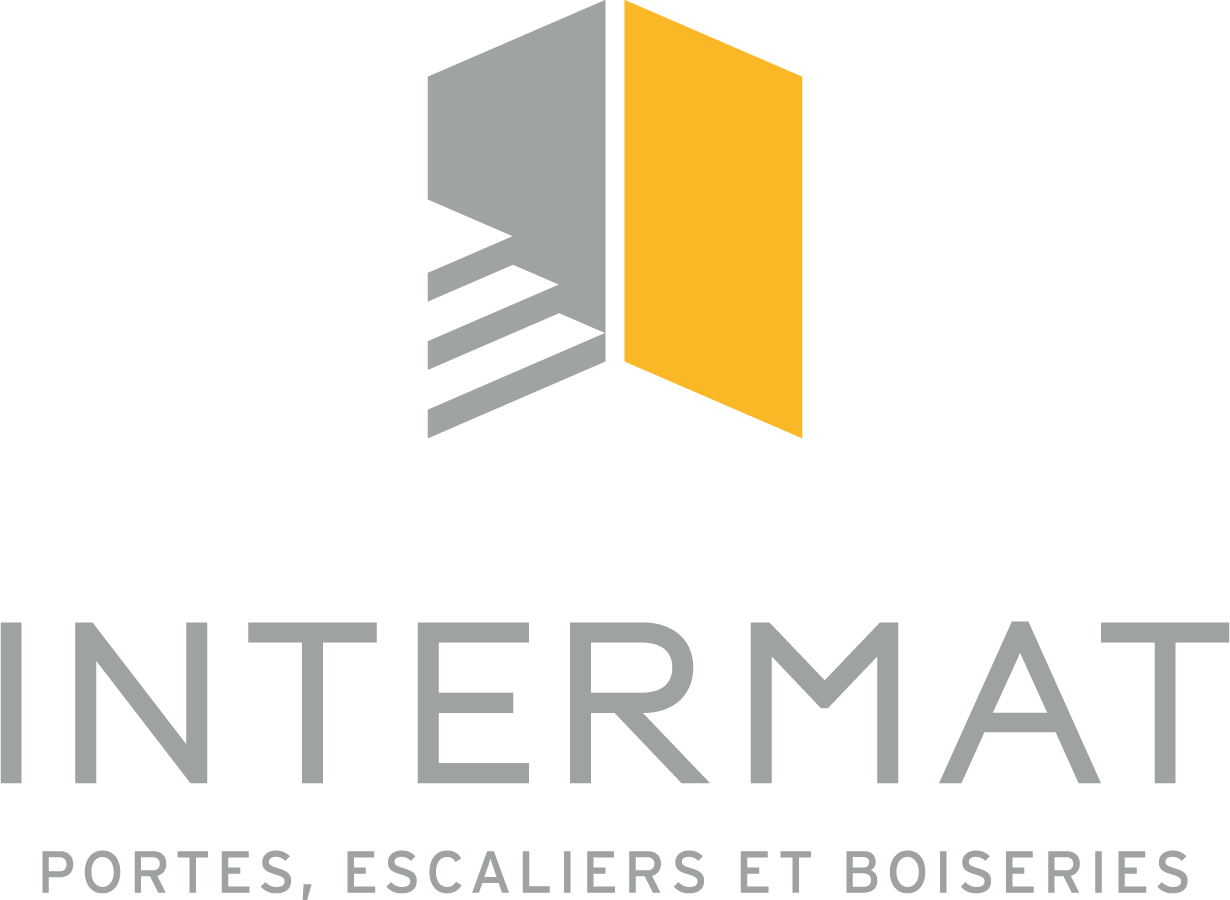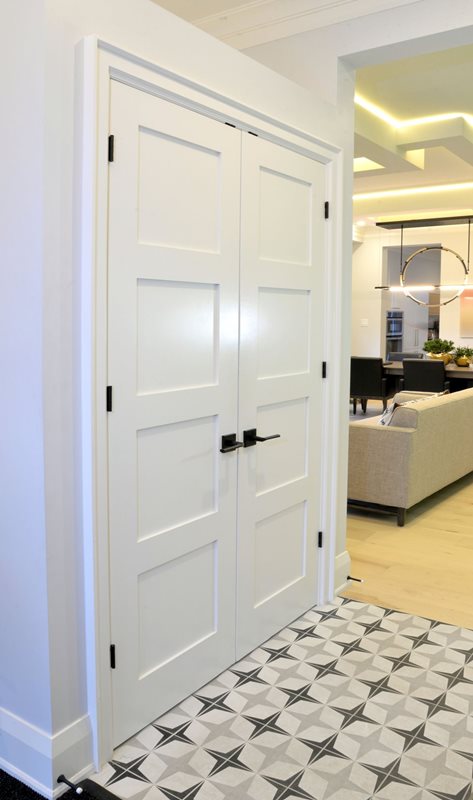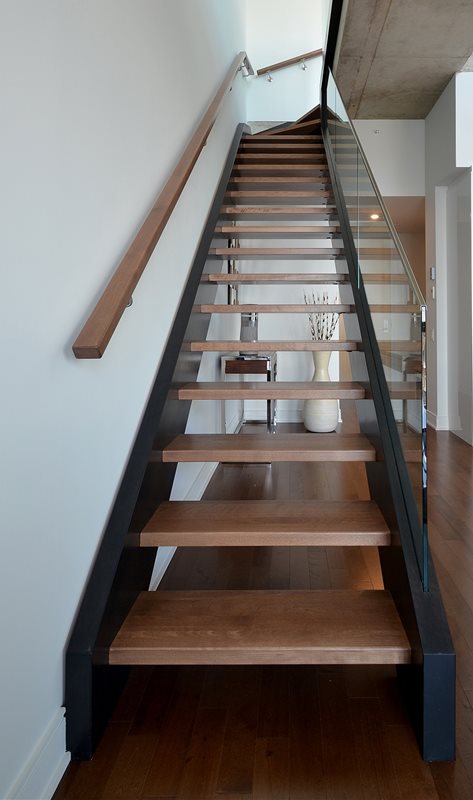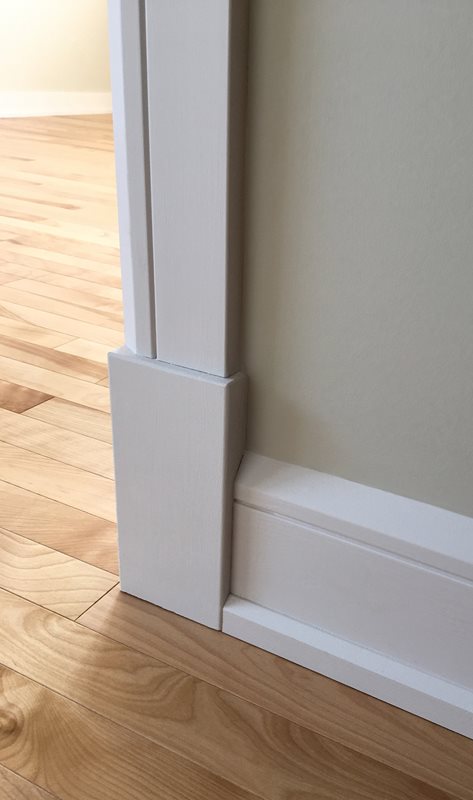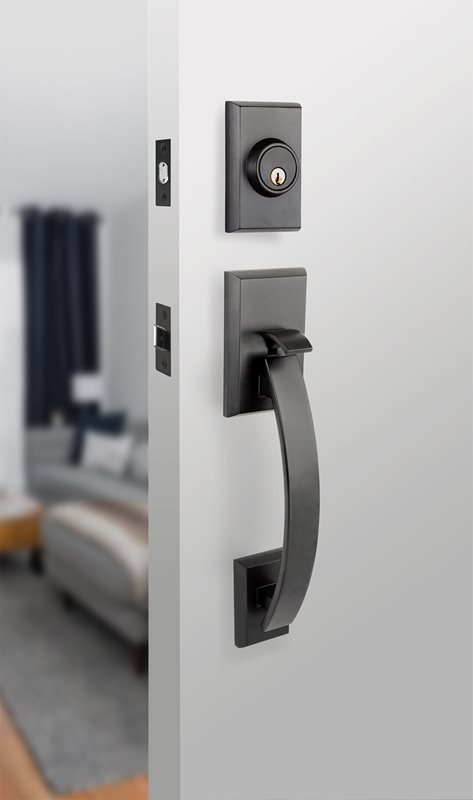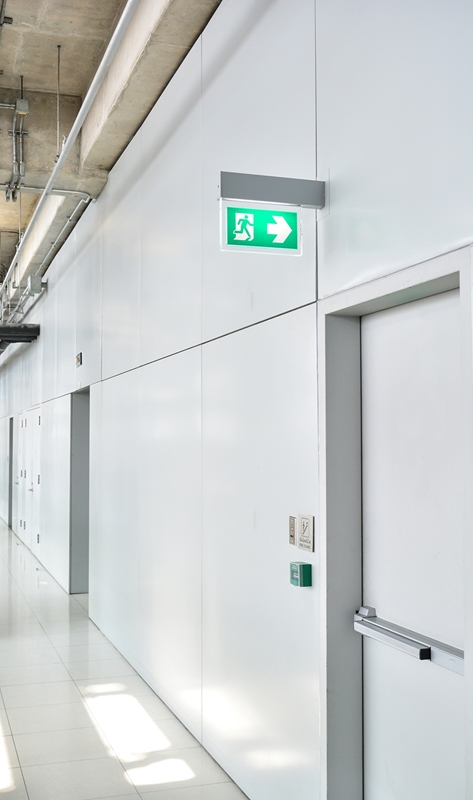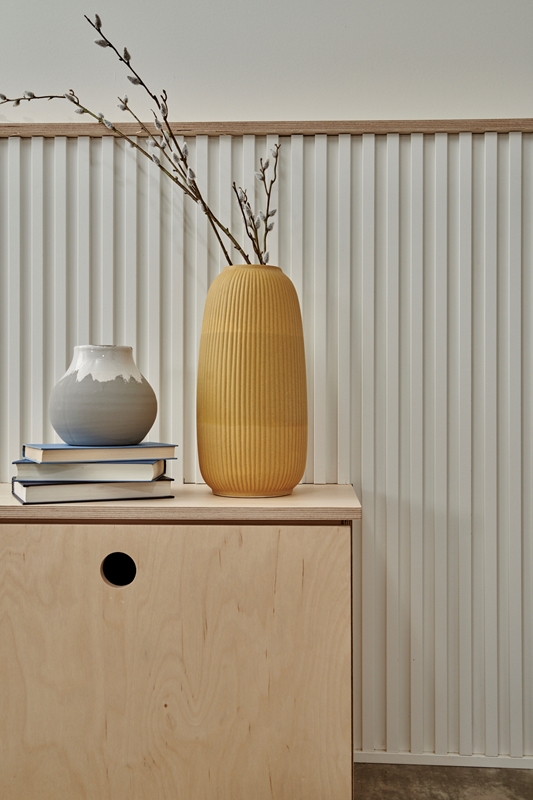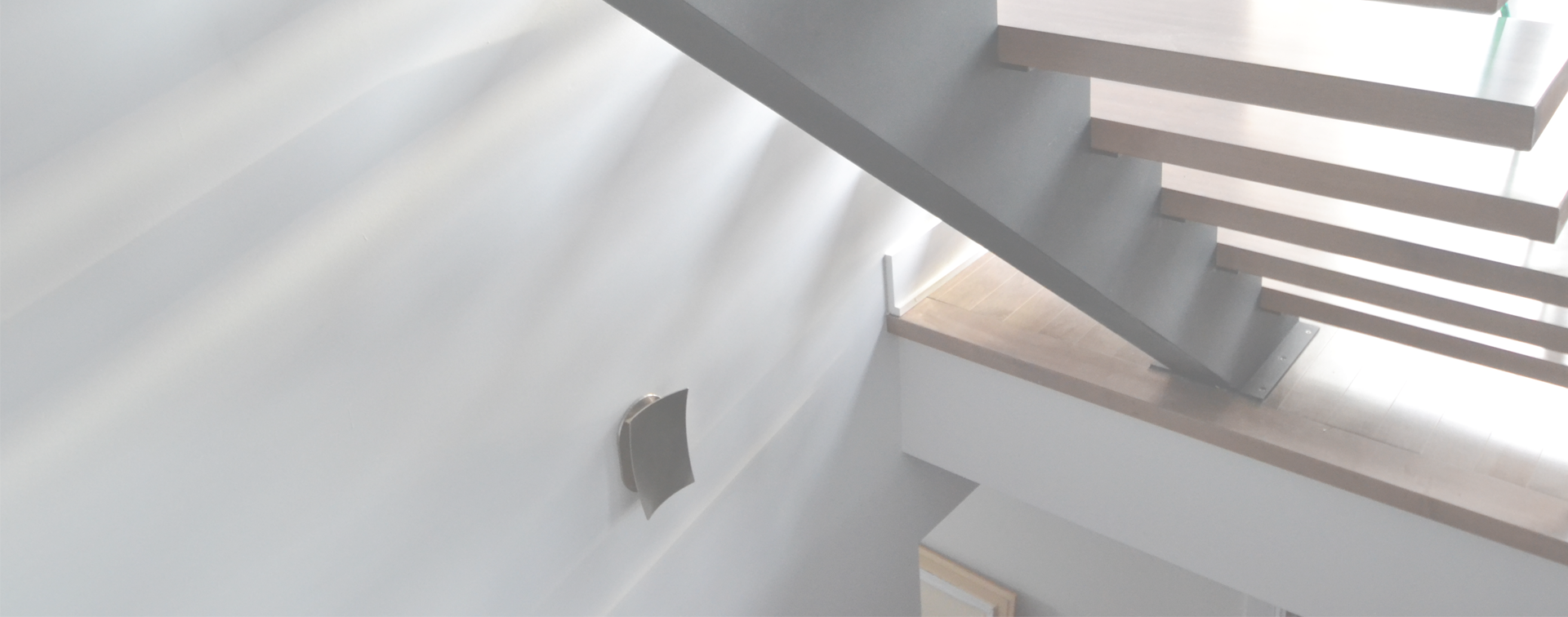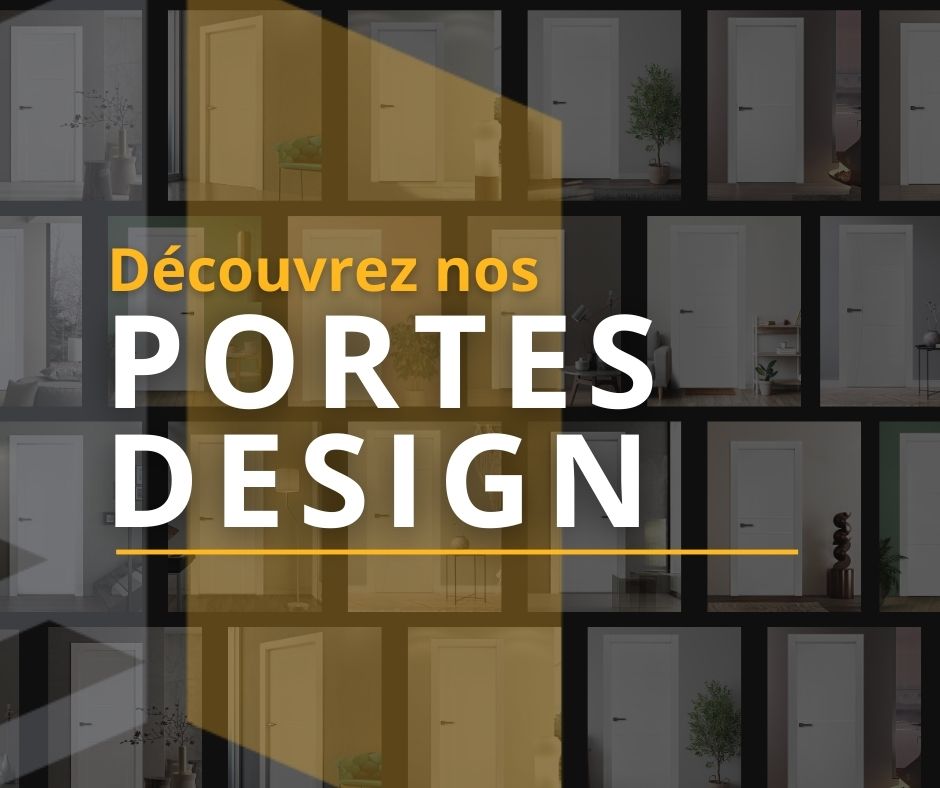Beyond its utilitarian function, an interior staircase is now part of the decorative elements of a house. A staircase can be extravagant or classic, in the centre of a room or rather discreet. Depending on your tastes and the style that you want for your room, your choice will vary.
In the following lines, we’ll discuss the different aspects to consider when building a staircase such as the type of staircase, the floor covering, the staircase style, the staircase components as well as the materials put to use.
This guide has been designed to save you time and money for your interior staircase construction project. In addition, to help you choose a staircase style that matches your decor, check out our blog post to help you find your staircase in 3 easy steps.
Types of interior staircases
There are several types of internal staircases, in different sizes and formats. You may have enough space to be able to choose any type of staircase. On the other hand, your space may also be limited and may require you to choose one type of staircase over another.
We discuss the various types of staircases in the next lines to help you make your choice.
Straight staircase: This is the most common and least expensive type of staircase on the market.
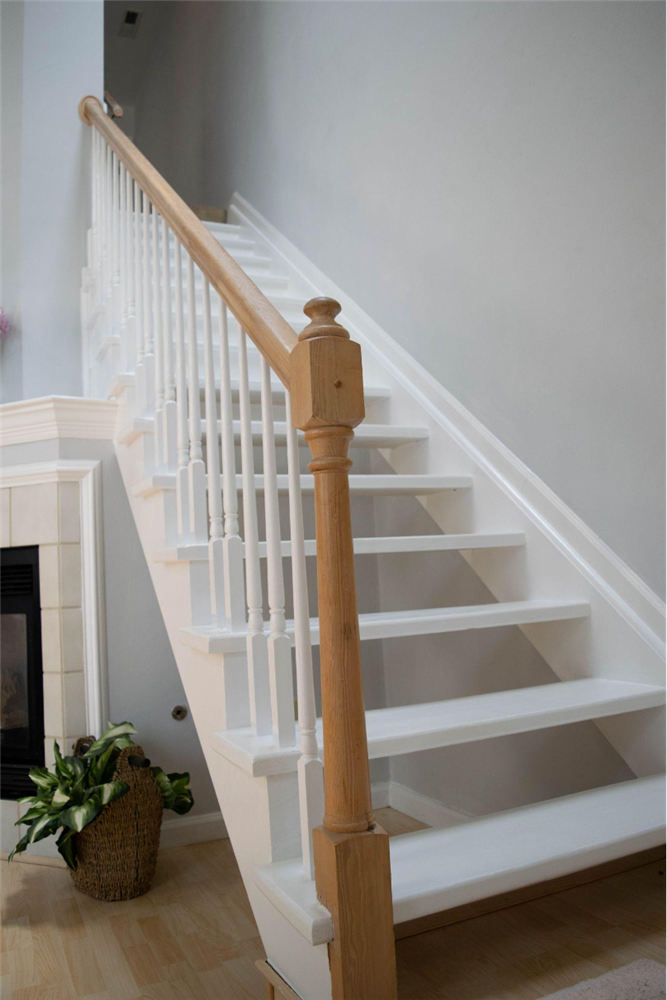
Curved staircase: It consists of a continuous curve with no landing, and is suitable for various room configurations. Also, a curved staircase has the advantage of taking up less space than a straight type staircase.
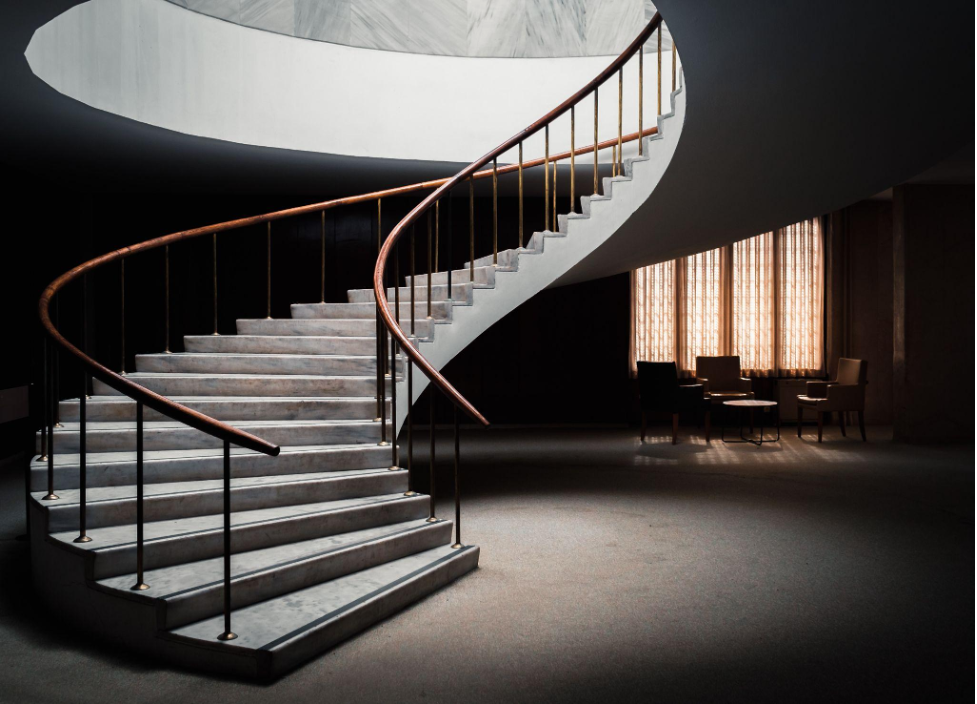
Quarter-turn staircase: This staircase is also known as an L-staircase. This staircase makes a left or right turn after a landing. It is recognised for the space saving that it allows.
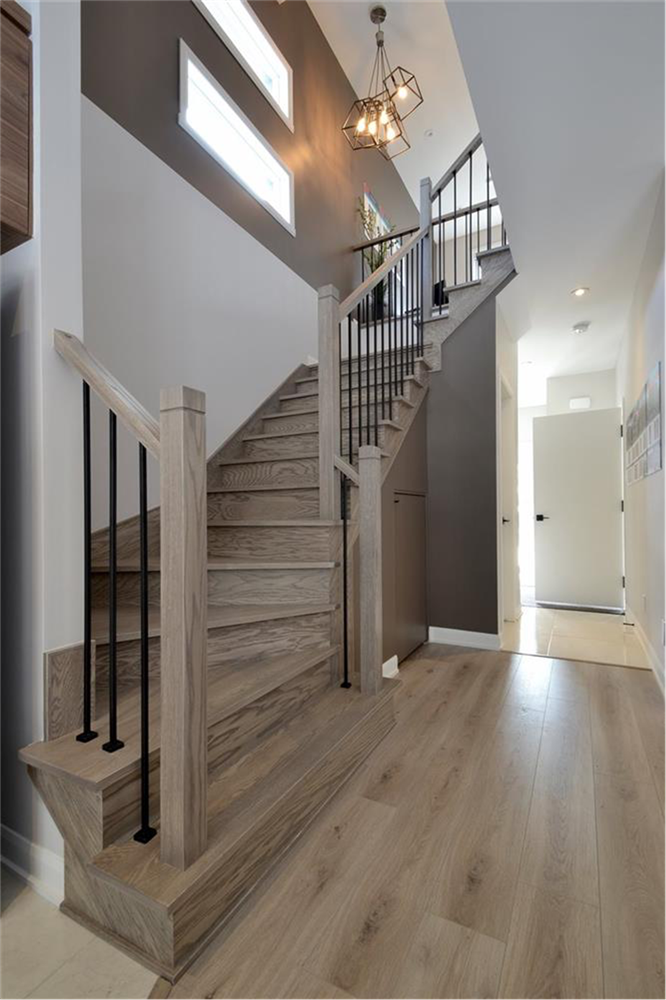
Half-turn staircase: This staircase has one or more 180 degree turns and only one landing. Staircases of this type are frequently used in new constructions. This type of staircase makes it possible to give an interesting style to your room's design, while taking up little space.
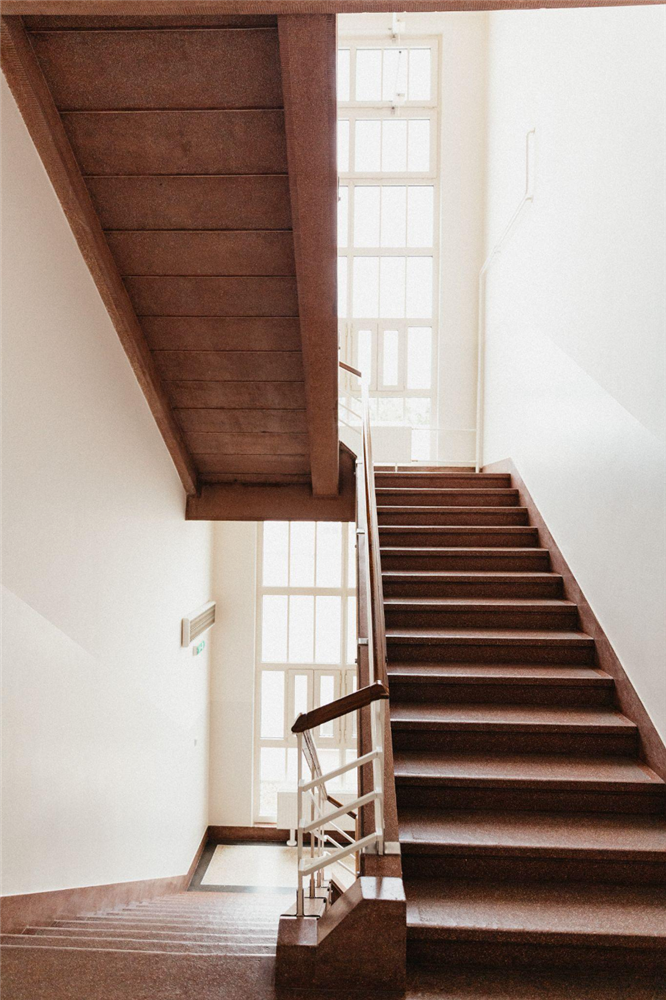
Circular staircase: This staircase has a more flexible curve, which means that the steps are easier to use in comparison to a spiral staircase. A staircase of this type is more expensive, and requires more space.
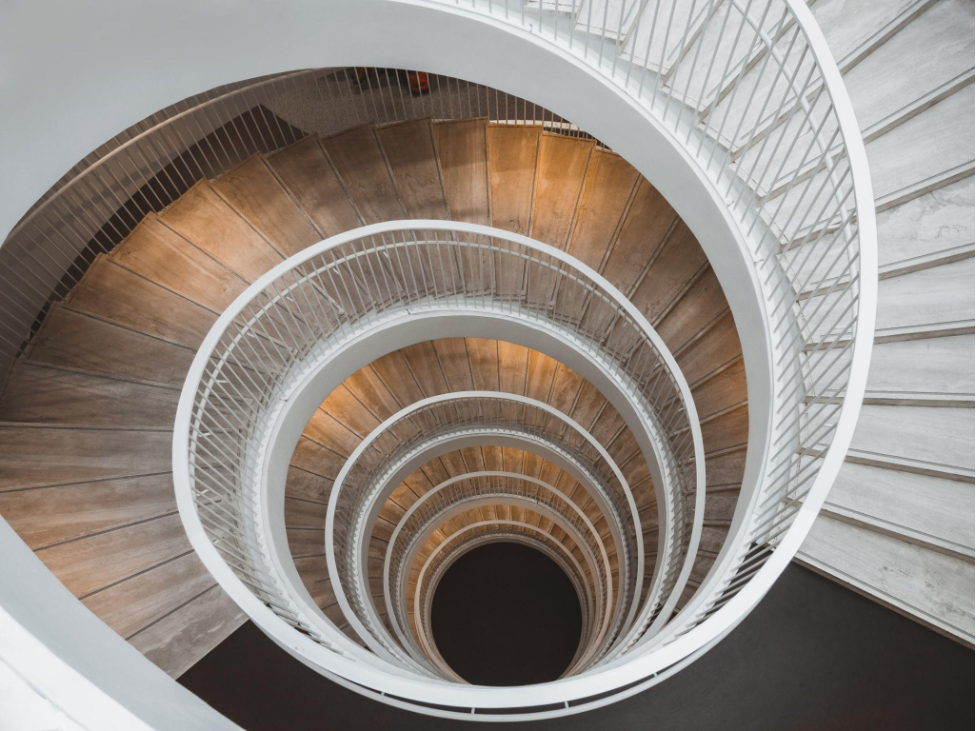
Spiral staircase: A spiral staircase has a very unique style and frequently includes a central pole. Taking up very little space, it's the perfect choice for a small room.
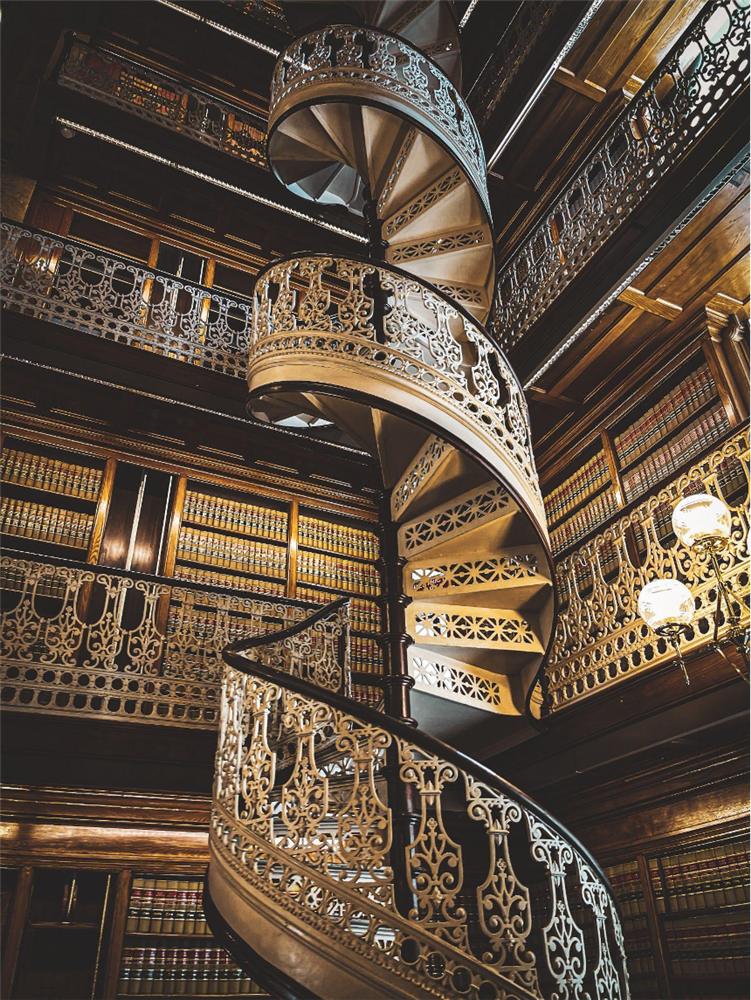
Two-flight staircase: This type of staircase requires a very large space. It is frequently found in the entrances of spacious houses. Impressive and stylish, a staircase of this type is very expensive and requires extensive work.
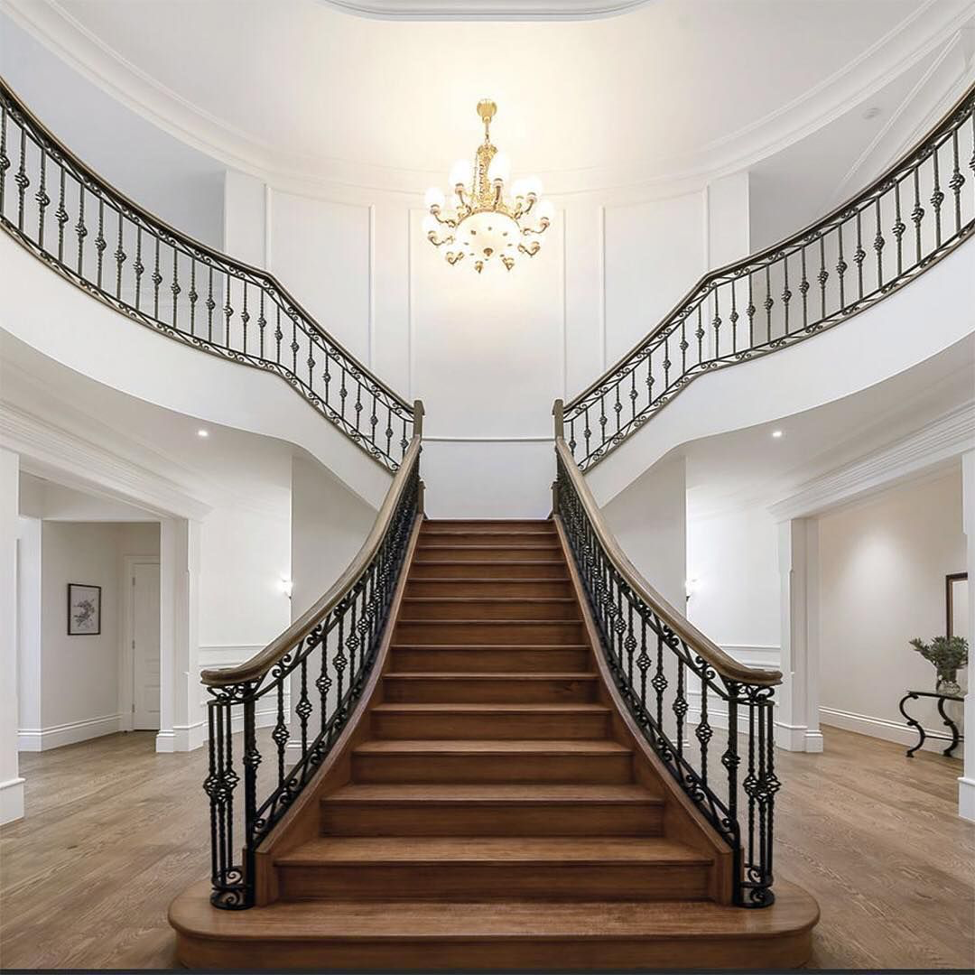
Floating staircase: This type of staircase has no stringers and the steps do not touch each other. It provides a room with a sleek style.
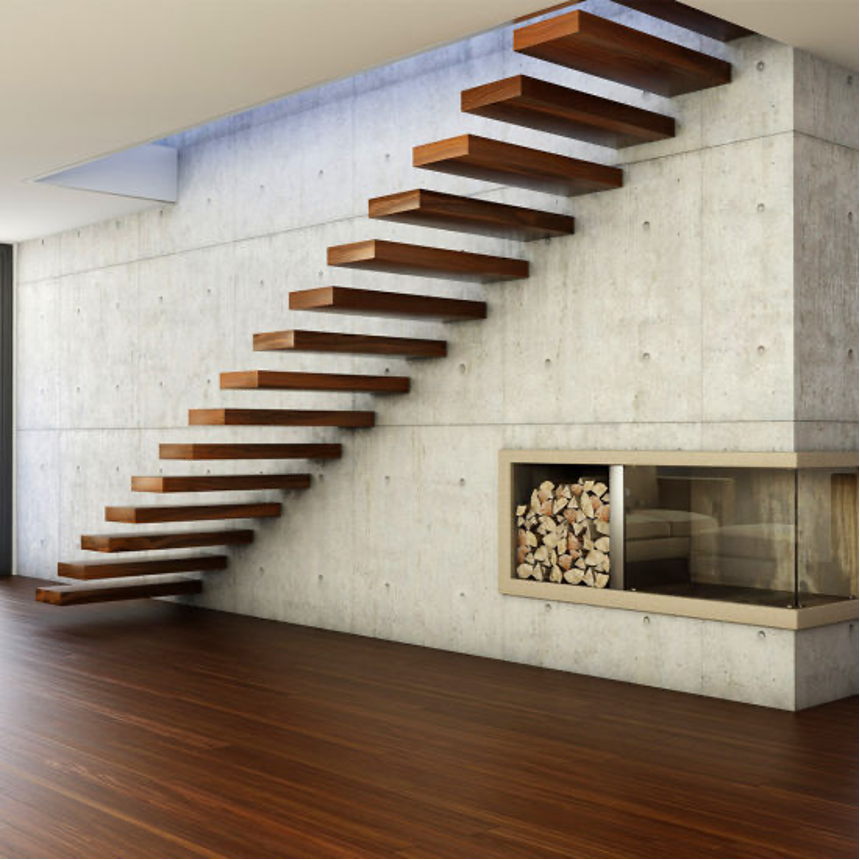
Floor coverings for interior staircases
Once you’ve chosen the type of staircase that you want to install in your living space, you'll be able to give more thought to its design. The floor covering that you decide to install will give a certain style to your decor so if you want everything to fit together, you can take inspiration from several looks available online.
Wood: This is the most commonly used type of flooring for interior staircases, as it offers a classic style and pairs with varying types of decor.
Laminate: This is an affordable covering, and is available in a wide variety of styles and colours.
Carpet: This is a soundproofing material that is often used in commercial locations. This covering is available in a variety of patterns, colours and textures, enabling you to give different styles to your staircase.
Ceramic: Like the carpet floor covering, ceramic is available in a variety of colours, textures and designs. In addition, this material is very durable and easy to maintain. Consequently, ceramic has the characteristic of being cold.
Vinyl: This covering can easily imitate wood or stone, it's also very affordable. However, it’s less durable than other materials.
Styles of interior staircases
When you get to the point of building a staircase, you’ll need to initially determine the style of interior staircase that you want to install according to the design and your available space. Depending on your desired style, you'll be able to determine the components, floor covering and type of staircase that you wish to select. Here is a description of the 4 main styles of interior staircases that are found on the market.
Contemporary staircase: It’s a type of interior staircase that fits in well with several types of decor. Offering colour contrasts while being simple, this staircase provides your room with a very current look.
Minimalist staircase: This rather simplistic staircase has pure and straight lines.
It givesa very clean style to your room without excessive gimmicks.
Modern staircase: This interior staircase is madeof materials such as glass and stainless steel, which gives a bright and modernized finish to your decor.
Classic and romantic staircase: Known for its elegance, this staircase has several details. Solid wood steps and forged metal balusters add elegance to your room.
Components of interior staircases
Several elements are needed in order to build an interior staircase. Depending on the type of staircase and the style that you want for it, your choices of components can vary considerably. Here are a few examples of components, though there are several others.
Balusters: Located between the handrail and the stringer, they can be made of wood, steel or wrought iron.
Stair riser: This is the wooden panel between the space of the steps. Some interior staircases do not have risers.
Railing: This includes the balusters and the handrail, thereby providing protection against the open sides of the steps.
Step run: This is the horizontal space between the two consecutive steps.
Stringer: A piece of wood or steel on which the steps and risers rest.
Handrail: It serves as a hand support, it rests on the balusters and is part of the railing.
Landing: This is the horizontal platform between two flights of stairs.
The best materials for interior staircases
Your stairs can be made of a variety of materials. Ideally, you'll want materials that are trendy, durable and of good quality. The following are examples of materials that are commonly used in the manufacture of interior staircases.
Wood: For the manufacture of an interior staircase, wood is the most commonly used material. Mainly thanks to its charm and classic style, it blends with all types of decor. However, it must be remembered that wood requires maintenance in order to maintain the desired style.
Metal - steel: If you want your interior staircases to have an industrial or contemporary style, steel balusters and cables provide this style. However, this material is more expensive than wood.
Concrete: This material is seldom used for interior staircases. However, it can be used to manufacture a tailor-made and solid staircase. It will therefore last for several years, but requires a formwork step that can take several weeks.
Glass: This material can give a modern look in addition to allowing light to pass through the railings. On the other hand, glass tends to get dirty and requires frequent cleaning so as to avoid dust and fingerprints.
Find your interior staircase at Intermat
At Intermat, we manufacture and install everything that you need for your staircases. We’re your #1 reference when it comes to interior staircases. Check out all the staircase components available at Intermat. Contact us if you have any requests and questions about our interior staircases.

